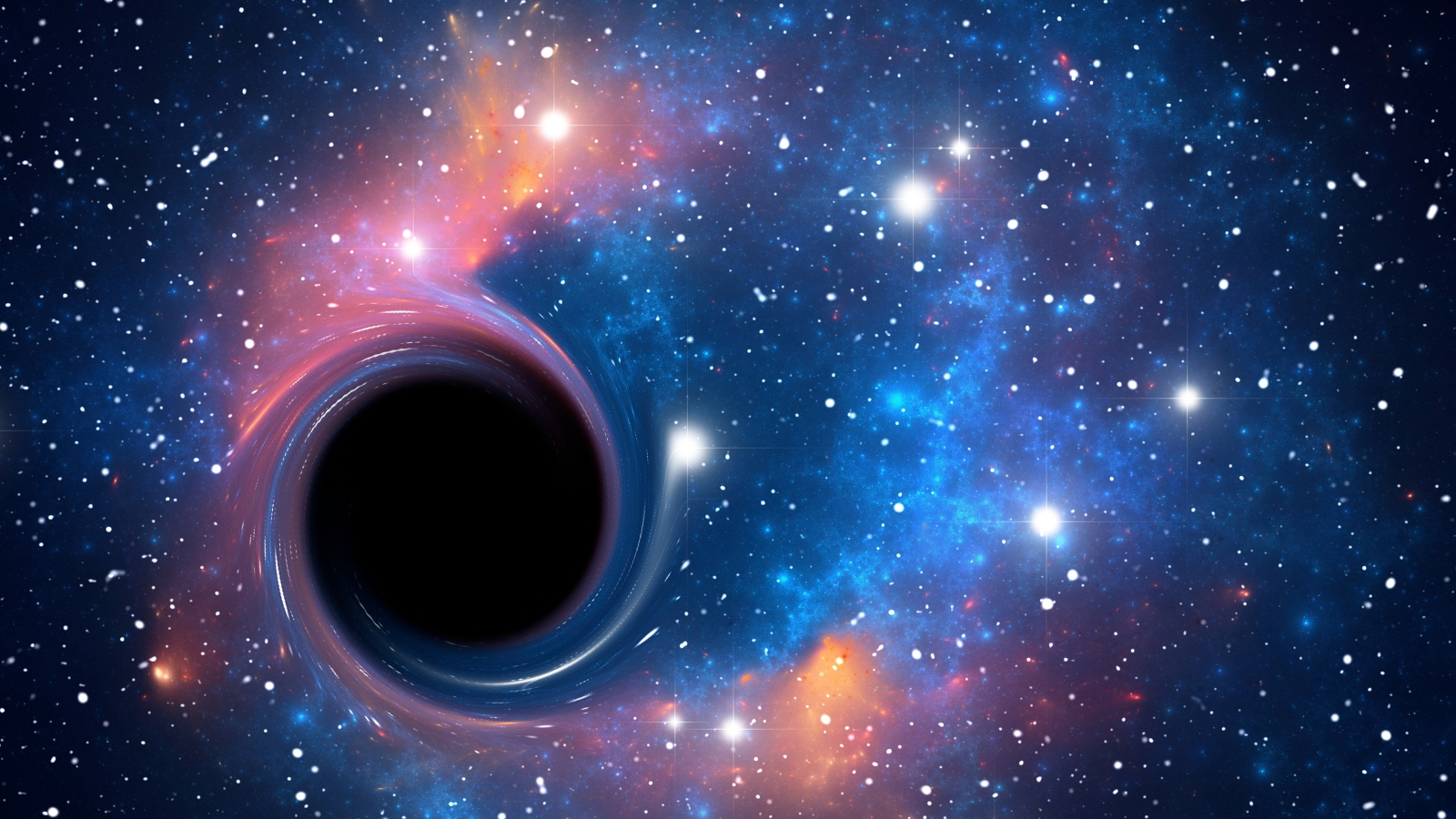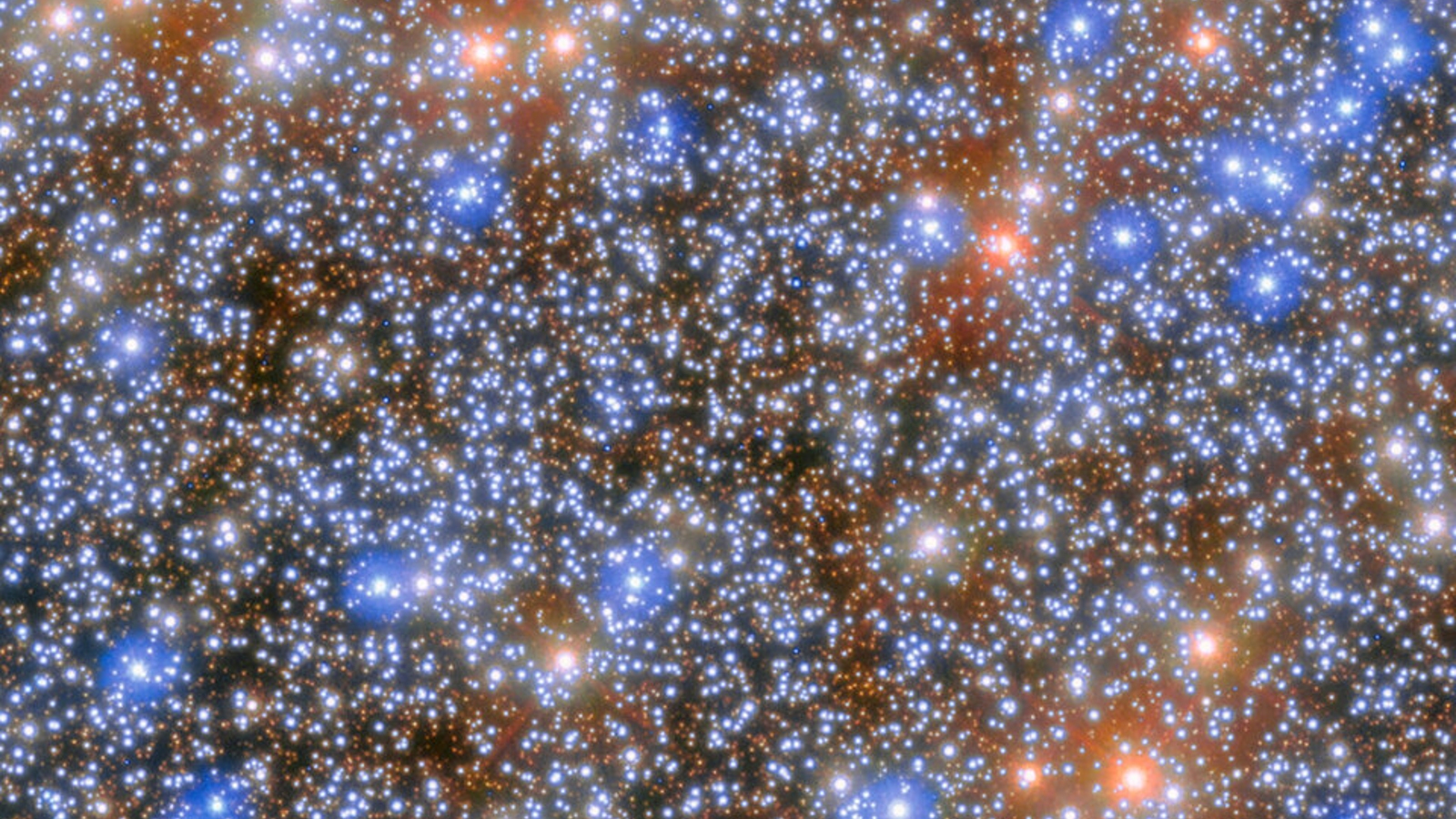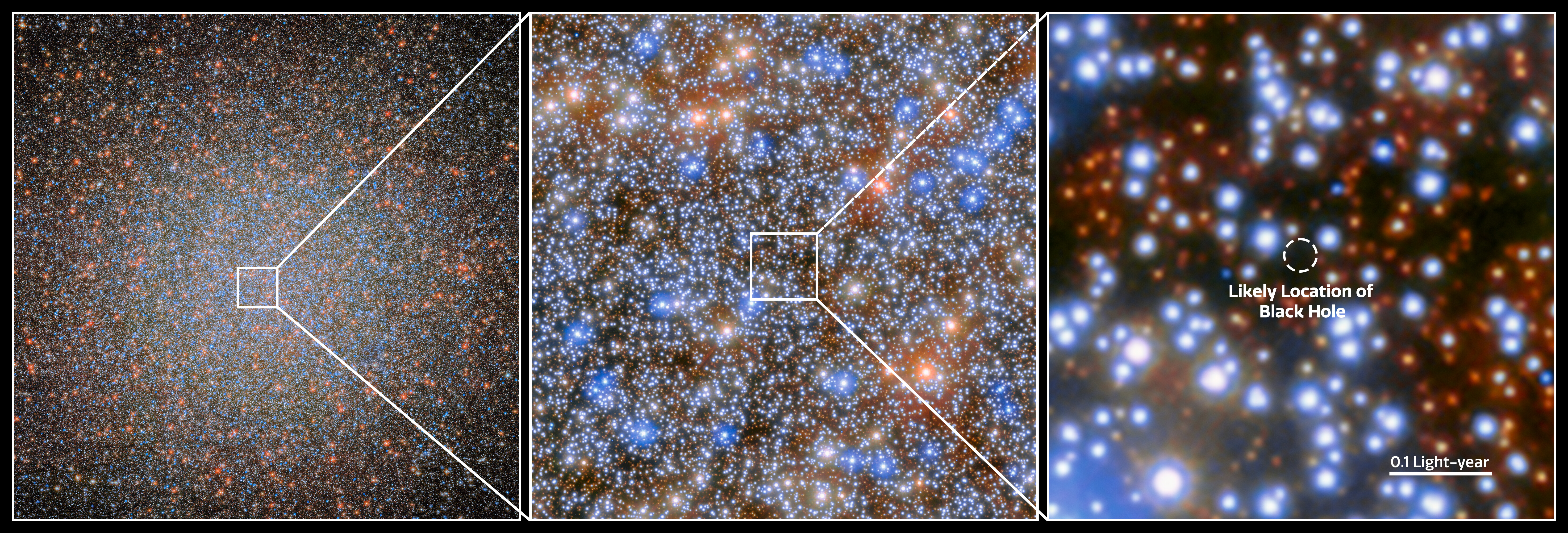Milky Way's rarest black hole may lurk behind 7 stars that 'shouldn't be there'
Seven strangely-behaving stars in the Milky Way's Omega Centauri cluster may be under the influence of an extremely rare type of black hole, new research suggests.

Astronomers may have found a rare "missing link" black hole in the Milky Way after spotting a group of improbably fast-moving stars at the heart of a nearby stellar cluster. If confirmed, the cosmic juggernaut, known as an intermediate-mass black hole (IMBH), would be the second-largest black hole ever found in our galaxy.
IMBHs are an extremely rare subset of black holes that are larger than stellar-mass black holes but smaller than supermassive black holes. This means they can be anywhere between 100 and 100,000 times the mass of the sun, according to NASA.
In theory, IMBHs should be just as common as other black hole types. However, astronomers have struggled to locate potential IMBHs or confirm their existence — and they aren't sure why. As a result, IMBHs are often referred to as missing link black holes. While several promising candidates have been detected, none have been proven to be the real deal.
Now, in a recent study uploaded April 4 to the preprint server arXiv, researchers may have uncovered evidence of a large IMBH in the globular cluster Omega Centauri — a compact group of around 10 million stars in the Milky Way located around 17,000 light-years from Earth.
The team compared 500 photographs of Omega Centauri taken by the Hubble Space Telescope and mapped the movements of around 1.4 million stars at the cluster's center. This revealed at least seven stars that "should not be there," researchers wrote in a statement.
This is because these stars were spotted whizzing around fast enough to escape the cluster's gravity and fly off into intergalactic space. But despite this, the stars continue to orbit at breakneck speed near the cluster's center.
"The most likely explanation [for this] is that a very massive object is gravitationally pulling on these stars and keeping them close to the [cluster's] centre," study lead author Maximilian Häberle, a doctoral candidate at the Max Planck Institute for Astronomy (MPIA) in Germany, said in the statement. "The only object that can be so massive is a black hole, with a mass at least 8,200 times that of our sun."
Get the world’s most fascinating discoveries delivered straight to your inbox.
Related: The most elusive black holes in the universe could lurk at the Milky Way's center
The Milky Way's second-biggest black hole?
Omega Centauri is an unusual entity: It is around 10 times larger than most other globular clusters and is surprisingly flat. It is so massive that you can even see it with the naked eye on dark, clear nights, when it takes up almost as much of the night sky as the moon when viewed from Earth.
Researchers suspect that the cluster likely used to be a dwarf galaxy that orbited the Milky Way, before being pulled into the galaxy's middle. As a result, scientists have often wondered if there could have been a sizable black hole at its heart.
Researchers first proposed the idea of an IMBH in Omega Centauri in 2008, when Hubble revealed how tightly the cluster's stars are bunched at its center. However, at the time, other researchers argued that this could be caused by a swarm of several smaller, stellar-mass black holes.
But the superfast stars highlighted in the new study indicate the existence of an IMBH, the study authors argue.
"This discovery is the most direct evidence so far of an IMBH in Omega Centauri," study co-author Nadine Neumayer, an astronomer at MPIA, said in the statement. If confirmed, it would be the Milky Way's second-largest known black hole behind Sagittarius A* — the supermassive black hole at the heart of our galaxy, she added. "This is exciting because there are only very few other black holes known with a similar mass."
However, the presence of an IMBH in Omega Centauri is not confirmed, and more data is needed to know for certain if it is really there. It is also unclear exactly how large the cosmic entity might be and where it is.
The researchers have been granted time in the future to use the powerful James Webb Space Telescope to peer deeper into the cluster, which means we may not have to wait too long for more evidence of the black hole's existence.

Harry is a U.K.-based senior staff writer at Live Science. He studied marine biology at the University of Exeter before training to become a journalist. He covers a wide range of topics including space exploration, planetary science, space weather, climate change, animal behavior and paleontology. His recent work on the solar maximum won "best space submission" at the 2024 Aerospace Media Awards and was shortlisted in the "top scoop" category at the NCTJ Awards for Excellence in 2023. He also writes Live Science's weekly Earth from space series.




